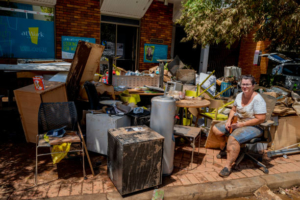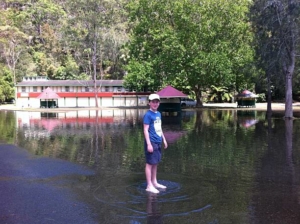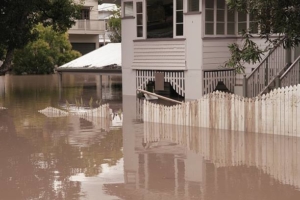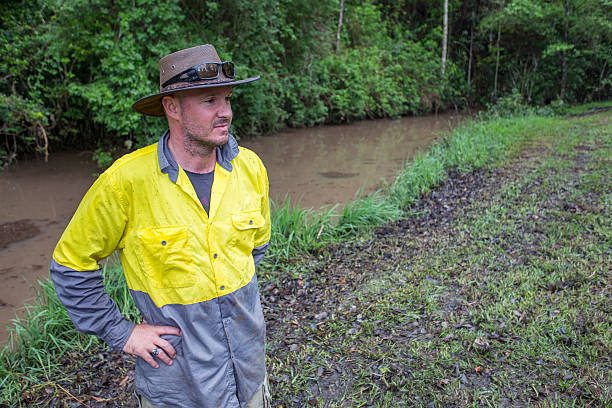Where Are The Most High-Risk Areas To Buy Property?
Australia has a harsh climate. The country is hot and humid with a high risk of natural calamities like bushfires, tropical cyclones, and flooding. Recent floods have wreaked havoc on Australia’s east coast. Lives were lost and houses were damaged. The government deployed the Australian Defence Force to affected communities. In light of recent natural disasters, including the 2019 bushfires and now the floods, difficult questions arise. Should we take a chance on purchasing property in locations that are prone to extreme climate events? Is the expense borne by the taxpayer a result of our unwillingness to recognise the dangers of these areas? Whereabouts are the areas most vulnerable to chaotic weather? Can we climate-proof our homes to decrease the threats associated with Australia’s unpredictable climate? How will climate change affect property values?
Should The Government Foot The Bill For Homes Destroyed In Natural Disasters?

The flood crisis that struck parts of NSW and Qld has left a soggy trail of devastation. Sydney’s M5 became a subterranean river as urban areas flooded. The deluge swept away houses and submerged roadways. Waterlogged townies resorted to kayaks to cross flooded passages. The worst-hit were regional and coastal areas. This continues a pattern of dangerous weather challenges that include the 2019 bushfires that preceded the coronavirus pandemic. While these were especially devastating events, acts of nature occur annually. Inevitably, people lose homes and, with them, all their earthly possessions. Likewise, businesses are ruined. During the recent floods, people were evacuated from their homes, and a state of emergency was declared in the affected zones. In the wake of the damage, in which thousands were left homeless, fingers were pointed at the government.
Some state leaders maintain that the responsibility for response and relief lies with the federal government. Inevitably, the disaster has descended into a political blame game. One side accuses the other of not doing enough to mitigate the impact. The focus shifted to relief, and the federal government responded with the promise of payments for residents in affected areas. Environmental activists, as they are prone to, blame the government’s climate record. Critics say the residents chose to live in high-risk areas. They argue that the taxpayer shouldn’t have to foot the bill for their lifestyle choices. Insurance companies are being swamped with claims. Home insurance premiums are set to jump a whopping 10% in the fallout. Residents in northern Australia pay the highest premiums and are the least insured because of their ill-affordability. The federal government has introduced legislation to insure insurers against catastrophic losses from massive payouts.
Where Are The Most Disaster-Prone Areas To Live?

Governments will not be able to sustain the cost of financial assistance for affected homeowners in the long run. Grants to aid businesses recovering from climate damage are even higher. Likewise, the cost of insuring homes and businesses in disaster-prone areas will become exceedingly costly. That is not to mention the amount of insurance rising across the board as a result of claims made by those in at-risk areas. Should homebuyers consider this before buying into locations with the potential for extreme weather? Common sense dictates the affirmative. However, is it that simple? No realtor has a legal requirement to warn about potential environmental hazards. Moreover, given the nature of climate change, potential hazards are widespread across cities and their regions. Increasing urbanisation is driving residential shifts to high-risk areas. Yet, if everyone were to leave that territory alone, the urban concentration would still face heatwaves, among other environmental perils.
According to the Australian Bureau of Statistics, 85% of Australia’s population lives within 50 km of the coastline. Those who live in coastal areas produce over a billion dollars. However, the anticipated cost that projections related to climate change may entail offers pause for thinking. A one-metre rise in the sea level would put 30,000 km of roads and $226 billion in danger of inundation. That is according to a University of New South Wales (UNSW) report on groundwater and climate change. However, logic dictates that for the foreseeable future, the chanciest neck of the woods will be self-revealing. Anywhere surrounded by bush invites bushfires, while riverbanks, lagoons, and the oceanside may face landslides, flooding, and freak waves. For example, insurance premiums are 20% higher for those in northern Australia. This is an indicator of the potential hazards.
Can We Climate-Proof Our Homes Against Natural Disasters?

Once a buyer and seller exchange contracts, they have purchased a house. But they have also committed to pay for unforeseen expenses. The average life of a brick house is around 90 years, while timber can stretch to 60. Renovations inevitably extend the lifecycle of the dwelling. However, we are much wiser now than we were 90 years ago or even 60. A new owner must consider the longevity of a house in the prevailing conditions. A wise buyer would have negotiated on that basis. Assuming the buyer isn’t re-building, the house must pass tests other than size and locality. It must be sturdy enough to survive the elements.
The National Construction Code establishes the building criteria for dwellings built in areas accustomed to extreme climates. However, the new thinking suggests going above and beyond. Adaptive standards are recommended by the Australian government. These require the homeowner to assess the climate variables and the impact of climate change. The government provides an online guide to adaptive methods for homeowners. These include the roof design, adequate cooling for heatwaves, insulation, and safe floor levels in the event of flooding. The site provides advice on preparing a house for bushfire protection, cyclones and extreme wind. In certain cases, such as those living in forested coast areas, a range of these caveats might apply. The information shows that experts have busily collated the risks and provided solutions to meet the challenges of climate change. At yourhome.gov.au, you can access all tiers of advice on how to understand conditions and prepare.
Will Climate Change Affect Property Values?

Climate change and natural disasters are expected to permanently boost the cost of home insurance. This might be a deciding factor in a buyer’s decision to reside in a specific location. Council planners have hitherto zoned flood-prone areas for residential purposes. Homes built in dicey vicinities will become expensive, although that may be different to valuable. These houses will incur hefty insurance premiums when after the areas are subject to catastrophic conditions. Similarly, homes built using adaptive methods will be sought after and fetch a higher market price. Experts believe that the cumulative costs involved in climate change will affect the property market. Bear in mind that this will be relative to the risk. It will also depend on the house itself. If it is sound by adaptive standards, or in need of renovation. The market is otherwise mostly safe from climate change.
Conclusion
Australia offers a stunning array of locations to put down roots. However, the longevity of a house is a matter of consideration, not for the future, but now. The quality of the scenery might be enough to entice some regardless of the potential for flooding, fire, or wind damage. Human beings evolved by taming their environment and adapting to challenges. Regardless, natural disasters affect us collectively. It isn’t wise to disregard the dangers when others bear the cost. Natural disasters aren’t the fault of governments, and buyers must be accountable for their choices. The greater the number of insurance claims, the higher the cost of insurance. Those inflated costs flow on to other areas of the economy. When the government is insuring the insurers, that means we are. Choose your new home wisely. Perfect Agent can connect you to a professional agent that will help you do just that.




